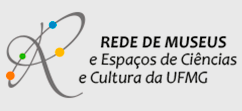
Autoria e Infos
Cibele Souza Bedetti
Contato:
Lattes:
Luzia Valentina Modolo
Contato:
Lattes:
Rosy Mary dos Santos Isaias
Contato: rosy@icb.ufmg.br (R.M.dosS. Isaias).
Lattes:
Resumo
Palavras-chave:
Abstract
Gall inducers manipulate the biochemistry of plant cells, benefiting their own life cycles, and influencing on the growth of their host plants. Such manipulation may involve (poly)phenols and growth regulators, such as the indole-3-acetic acid (IAA). Some other
molecules, the reactive oxygen species (ROS), may co-occur at the sites of (poly)phenols accumulation, indicating the generation of oxidative stress, which may trigger this accumulation. Herein we focused on the possible co-occurrence of ROS, (poly)phenols and
IAA at the same gall tissues, and their involvement in growth and development of different gall morphotypes. This co-occurrence, together with indole-3-acetaldehyde (IAld), was confirmed in galls of Piptadenia gonoacantha (Mart.) MacBr. (Fabaceae) by histochemical tests. Developed color for commercial standards of IAA and IAld in TLC was used as controls. The presence of IAA and IAld in gall extracts was confirmed through ultraviolet–visible spectroscopy. The distinct compound is supposed to be auxin-(poly)phenol adducts, evidencing the metabolic interaction among ROS, phenolics and auxin. Current results
suggest the associated role of (poly)phenols, ROS and auxin in gall development, and led to the conclusion that phenolics seem to act primarily as growth regulators and secondarily as a chemical defense against natural enemies in gall systems.
Key-words: Auxin-(poly)phenol adducts, Histochemical tests, Plant–insect interaction, Thin layer chromatography;




